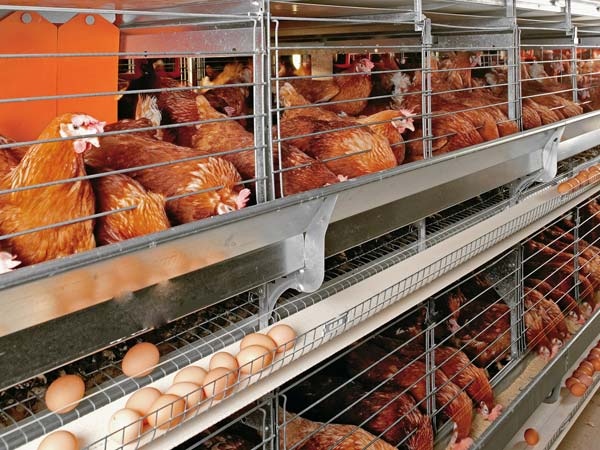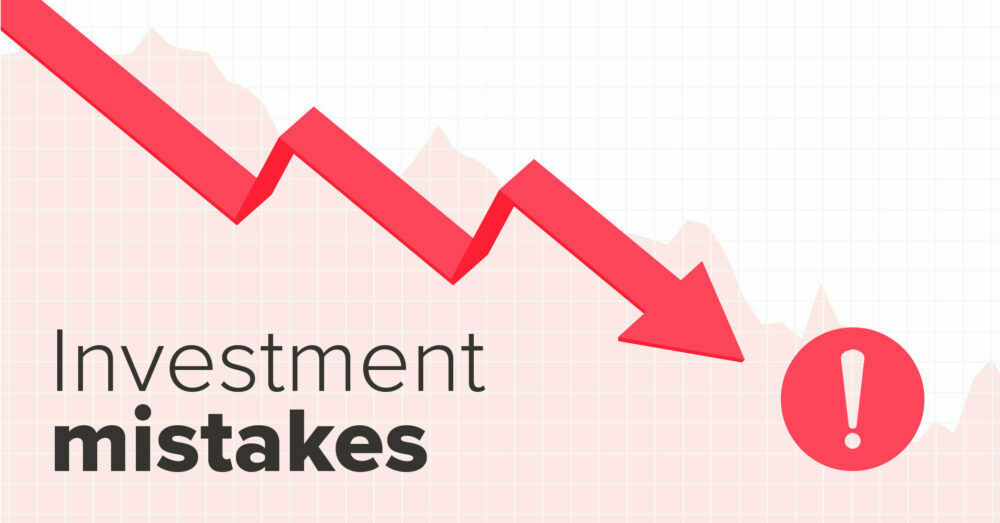Layer egg farming represents one of Zimbabwe’s most established agricultural enterprises, offering entrepreneurs the promise of daily income through consistent egg production. With growing urban populations and steady demand for protein-rich foods, many aspiring farmers are considering layer operations as their entry point into commercial agriculture. But beyond the apparent simplicity of collecting eggs daily lies a complex business model that requires careful financial planning and realistic expectations.
This comprehensive analysis examines the true profitability of layer egg farming in Zimbabwe, providing detailed financial projections, startup requirements, and operational costs based on a 500-bird commercial operation. We will explore both the opportunities and challenges you will face, giving you the honest numbers needed to make an informed investment decision. Additionally, we will provide a direct comparison with broiler farming profitability to help you choose the most suitable poultry enterprise for your circumstances.
Whether you are a complete beginner seeking your first agricultural venture or an experienced farmer considering diversification into egg production, this guide breaks down every aspect of layer farming economics, from initial housing construction to finding reliable suppliers across Zimbabwe.
Understanding the Layer Farming Business Model
Layer egg farming operates on a fundamentally different model compared to broiler production. Instead of the rapid 6-week turnaround of meat birds, layers represent a long-term investment spanning 18 months of productive laying. This extended cycle creates both opportunities and challenges that significantly impact profitability calculations.
The business model centers on purchasing point-of-lay birds at approximately 18-20 weeks of age, housing them in appropriate facilities, and collecting eggs daily for sale to wholesalers, retailers, or direct consumers. Success depends on maintaining high laying percentages, minimizing feed costs per dozen eggs produced, and securing consistent markets at profitable prices.
Unlike broiler farming where revenue arrives in large amounts at 6-week intervals, layer farming provides daily income through egg sales. This cash flow pattern appeals to many farmers, though the daily revenue amounts are smaller and require consistent marketing efforts.
Infrastructure Requirements: Housing and Cage Systems
Specialized Layer Cage Requirements
For 500 layers, you need specialized layer cage systems rather than open floor housing used for broilers. Modern commercial layer operations rely almost exclusively on battery cage systems due to their efficiency in space utilization, feed conversion, and egg collection management.
The industry standard utilizes 96-bird capacity cages at US$240 per cage. For 500 birds, you need 6 cages (96 × 6 = 576 capacity), providing slight overstocking flexibility to account for variations in bird size and unexpected additions to your flock.
Total Cage Investment: 6 cages × US$240 = US$1,440
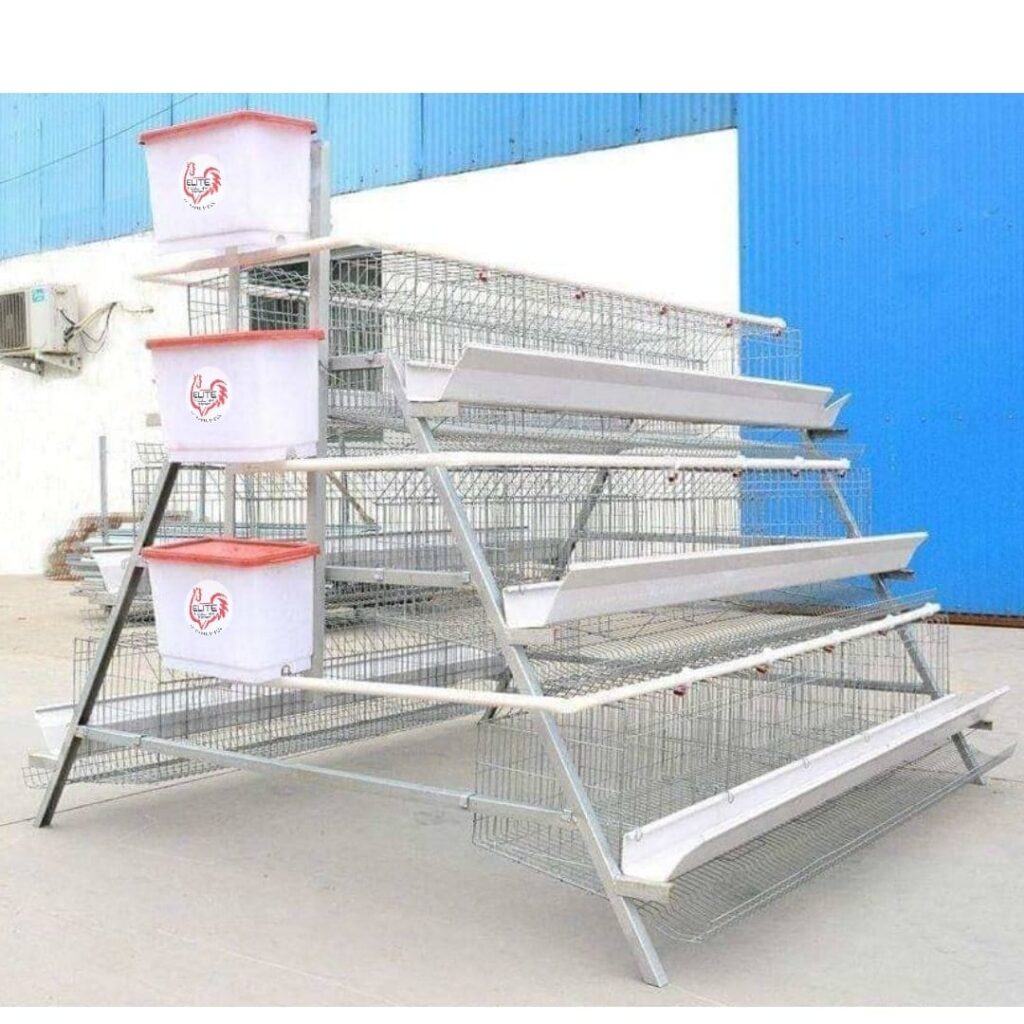
These cage systems come as complete integrated units including feeding troughs, automatic watering systems, and slanted floors with egg collection trays. This integration eliminates the need for separate feeding equipment, drinking systems, and nesting boxes, making cage systems highly efficient for commercial layer operations.
Cage System Advantages
Modern layer cages offer several operational benefits that justify their higher initial cost compared to floor systems. The integrated feeding troughs reduce feed wastage significantly, as birds cannot scratch and scatter feed like they would in floor systems. Automatic watering systems ensure constant clean water access while preventing contamination from droppings.
The slanted floor design allows eggs to roll gently into collection trays, reducing breakage and eliminating the need to search for eggs in nesting areas. This system also separates birds from their droppings, reducing disease pressure and improving overall flock health.
Housing Structure Requirements
The cages require protective housing to shield them from weather and predators while providing adequate ventilation for bird health. A basic shed structure costs US$2,000 to US$4,000 depending on materials used and construction quality.
The housing should provide adequate cross-ventilation while protecting cages from direct rainfall and excessive sunlight. Proper ventilation prevents ammonia buildup from bird droppings, which can reduce laying performance and create respiratory problems.
Water Supply Infrastructure
Reliable water access remains absolutely critical for layer operations, as even short water interruptions can drastically reduce egg production and potentially kill birds. Layer hens require approximately 200-250ml of clean water daily, making consistent supply essential for maintaining profitability.
Municipal Water Connection
If municipal water is available in your area, this often represents the most cost-effective initial option for startup operations. However, Zimbabwe’s municipal water supply faces frequent interruptions, making backup systems necessary even when municipal connection exists.
Monthly municipal water costs for 500 layers typically range from US$25-40, depending on local rates and consumption patterns. Factor in potential connection fees and monthly service charges when calculating ongoing operational costs.
Borehole Installation
A complete borehole system with pump, pipes, and storage tank costs US$2,000 to US$3,000. This investment provides long-term water security and independence from municipal supply interruptions. Boreholes typically pay for themselves after a few years through reduced monthly water costs and improved production reliability.
Borehole depth requirements vary by location, typically ranging from 40-70 metres in most farming areas. Include water testing costs to ensure quality meets poultry requirements before finalizing borehole installation.
Well System Alternative
For areas with accessible water tables, well systems offer a more affordable option at approximately US$1,000 for complete setup including pump, pipes, and storage tank. Wells require less initial investment but may have limited yield compared to properly constructed boreholes.
Consider seasonal water table fluctuations when planning well systems, ensuring adequate depth to maintain supply during dry seasons when layer operations continue requiring consistent water access.
Initial Bird Investment and Point-of-Lay Purchase
Understanding Point-of-Lay Birds
You purchase 500 point-of-lay birds at approximately 18-20 weeks of age when they are ready to begin egg production. These birds cost US$10 per bird at current market prices, representing a significant upfront investment compared to day-old chicks.
Total Bird Cost: 500 × US$10 = US$5,000
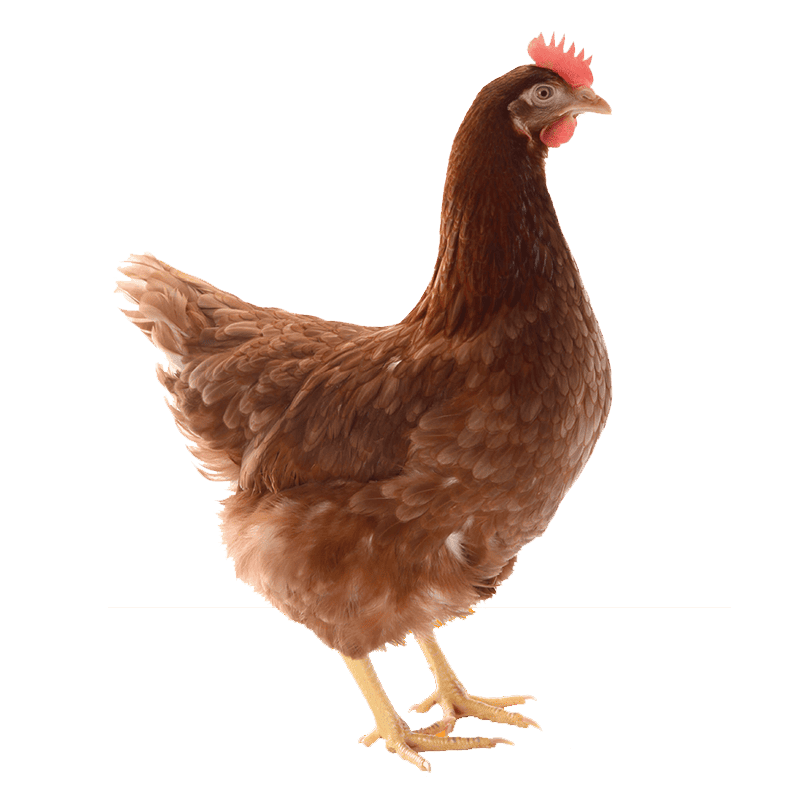
Point-of-lay birds cost significantly more than day-old layer chicks but eliminate the 18-20 week rearing period, associated feed costs, and mortality risks of raising pullets from chicks. This trade-off makes point-of-lay purchase attractive for farmers seeking immediate production startup.
Point-of-Lay Advantages
Purchasing point-of-lay birds provides several business advantages that justify the higher initial cost. You avoid the complex brooding period requiring specialized temperature control and feeding programs. The 18-20 week rearing period would require approximately 8-10kg of feed per bird, costing an additional US$2,500-3,000 in feed expenses alone.
Most importantly, you eliminate the 15-25% mortality risk associated with raising day-old chicks to laying age. This mortality rate would potentially cost 75-125 birds worth US$750-1,250 in lost investment, making point-of-lay purchase financially prudent for most commercial operations.
Bird Quality and Selection
Quality point-of-lay birds should be healthy, alert, and showing signs of approaching laying maturity such as developing red combs and wattles. Avoid birds that appear lethargic, underweight, or show signs of disease or stress from transport.
Establish relationships with reputable suppliers who maintain proper vaccination programs and provide health records for their flocks. Quality genetics and health management at the supplier level directly impact your laying performance and profitability.
Daily Production Analysis and Revenue Calculations
Production Efficiency Standards
At 80% production efficiency, which represents industry standard for good management practices, your 500 layers produce 400 eggs daily. This efficiency rate accounts for normal variations in individual bird performance, molting periods, and seasonal production fluctuations.
Daily Egg Production: 500 birds × 80% efficiency = 400 eggs
Production efficiency can vary significantly based on management quality, feed nutrition, lighting programs, and environmental conditions. Well-managed operations often achieve 80-85% efficiency, while poor management can reduce production to 60-70% or lower.
Market Packaging and Pricing
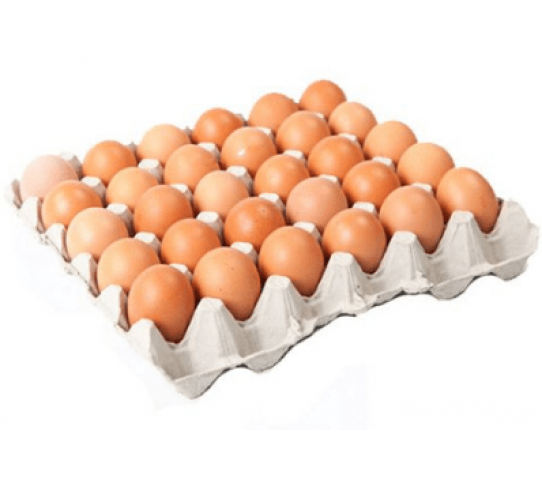
The standard wholesale packaging unit is 30-egg crates, with current wholesale prices averaging US$3.50 per crate. This pricing assumes bulk sales to established buyers rather than retail sales which might achieve higher prices but require additional marketing efforts.
Daily Crates Produced: 400 eggs ÷ 30 eggs per crate = 13.33 crates
Daily Revenue: 13.33 crates × US$3.50 per crate = US$46.67
Monthly Revenue: US$46.67 × 30 days = US$1,400
Revenue Optimization Opportunities
While wholesale pricing provides consistent income, direct retail sales can increase revenues significantly. Individual consumers often pay US$4.50-5.00 per crate, representing 30-40% higher margins. However, retail sales require additional marketing efforts, smaller delivery quantities, and stronger customer service capabilities.
Restaurant and institutional sales often fall between wholesale and retail pricing, typically US$4.00-4.25 per crate for consistent large orders. These markets provide good compromise between pricing and marketing effort requirements.
Comprehensive Feed Requirements and Cost Analysis
Daily Feed Consumption
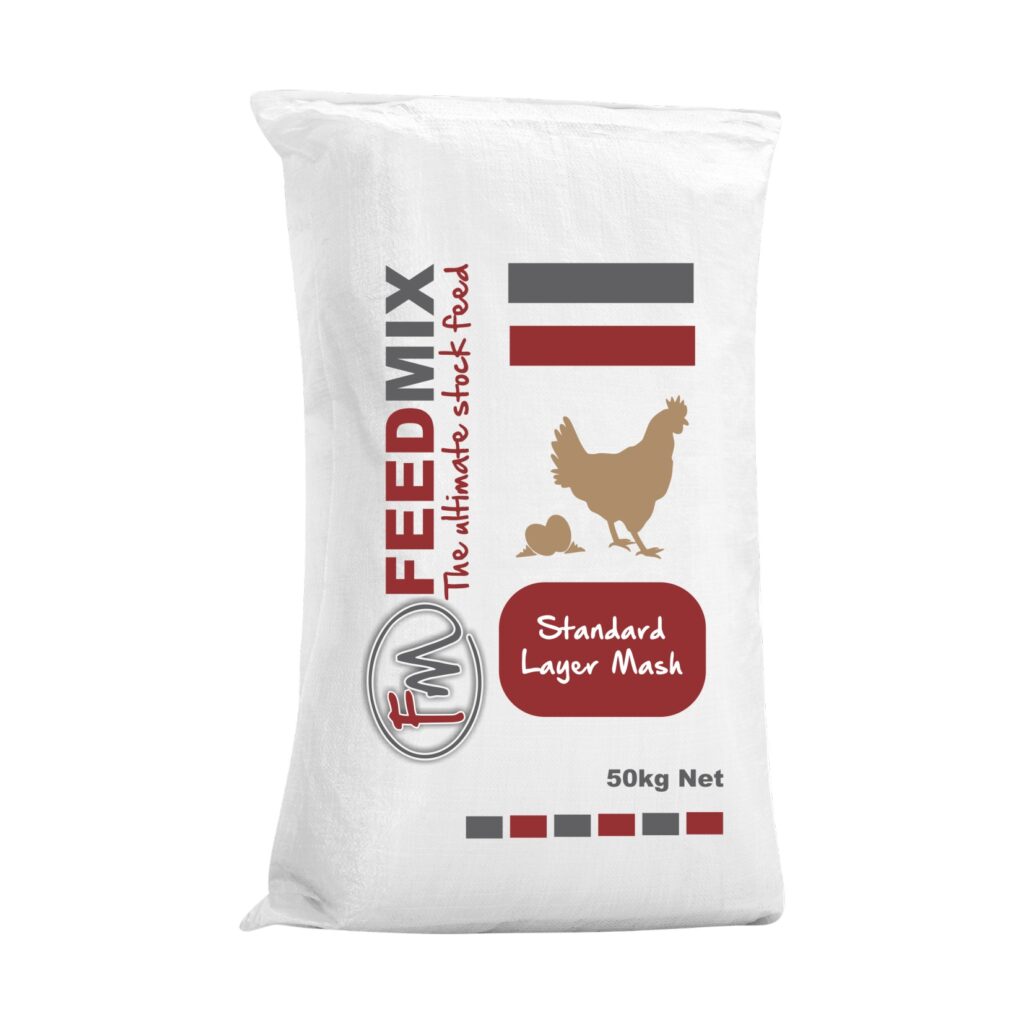
Each layer requires 100-120g of feed daily for optimal egg production and body maintenance. Using the lower estimate of 100g per bird ensures adequate nutrition while managing costs effectively.
Daily Feed Requirement: 500 birds × 100g = 50kg (1 bag of 50kg layer mash)
Layer mash is specifically formulated with higher calcium content (3.5-4.0%) compared to other poultry feeds to support strong eggshell formation. The protein content typically ranges from 16-18%, providing balanced nutrition for sustained egg production.
Feed Cost Calculations
At current prices of US$27 per 50kg bag, your daily and monthly feed costs are:
Daily Feed Cost: 1 bag × US$27 = US$27
Monthly Feed Cost: US$27 × 30 days = US$810
Feed represents your largest ongoing operational expense, typically accounting for 60-65% of total operational costs. Effective feed management and minimal wastage directly impact profitability more than any other single operational factor.
Feed Quality and Nutrition Management
Quality layer feed should maintain consistent nutritional profiles and avoid moldy or contaminated ingredients that can reduce laying performance. Store feed in dry conditions and use within 2-3 months of manufacture to maintain nutritional value.
Consider relationships with multiple feed suppliers to ensure competitive pricing and supply security. Some larger operations explore on-farm feed mixing to reduce costs, though this requires additional investment in equipment and nutritional expertise.
Operational Expenses Breakdown
Packaging and Container Costs
Empty egg crates cost US$8 per 100 crates, equivalent to US$0.08 per crate. These containers are typically reusable for multiple sales cycles, though breakage and loss require regular replacement.
Daily Crate Cost: 13.33 crates × US$0.08 = US$1.07
Monthly Crate Cost: US$32
Most buyers return empty crates when purchasing new eggs, reducing actual container costs. However, budget for 10-15% annual replacement due to breakage and loss during transport and storage.
Transportation and Logistics
Moving feed to your farm and delivering eggs to market costs approximately US$50 per month. This includes feed delivery fees and fuel costs for egg distribution to various buyers.
Many feed suppliers offer delivery services included in their pricing, particularly for regular customers. Compare total costs including delivery when evaluating supplier options. Own transport reduces ongoing costs but requires vehicle investment and maintenance.
Electricity Requirements
Layers require 14-16 hours of light daily for optimal egg production, particularly during shorter daylight periods. Monthly electricity costs average US$30 assuming standard commercial rates and efficient lighting systems.
Consider energy-efficient LED lighting systems to reduce ongoing electricity costs while providing consistent illumination. Timer systems automate lighting schedules, ensuring proper light duration without manual intervention.
Labor Costs
One worker at US$120 per month can handle feeding, daily egg collection, and basic maintenance for a 500-bird operation. This labor cost assumes part-time or shared labor arrangements suitable for smaller operations.
Daily tasks include feeding, egg collection, cleaning waterers, and basic health monitoring. Weekly tasks involve cage cleaning, egg inventory management, and equipment maintenance.
Total Monthly Operating Costs
Monthly Operating Costs Summary:
- Feed: US$810
- Egg crates: US$32
- Transport: US$50
- Electricity: US$30
- Labor: US$120
- Total: US$1,042
Monthly Profitability Analysis
Basic Profit Calculations
Monthly Revenue: US$1,400
Monthly Operating Costs: US$1,042
Monthly Gross Profit: US$358 (excluding the cost of point-of-lay birds)
This monthly gross profit calculation excludes the depreciation cost of point-of-lay birds, which must be factored into long-term profitability analysis. The birds represent a depreciating asset that loses value over the 18-month laying cycle.
Cash Flow Considerations
While the monthly gross profit appears attractive, remember that you invested US$5,000 upfront for point-of-lay birds. This investment must be recovered through the 18-month laying cycle, significantly impacting actual profitability calculations.
Daily cash flow from egg sales helps with operational expenses, but the large upfront bird investment creates a different financial dynamic compared to broiler farming where investments and returns occur in shorter cycles.
18-Month Investment Cycle Analysis
Complete Cycle Profitability
Layer hens maintain productive laying for approximately 18 months before egg production declines significantly due to natural aging. At cycle end, spent hens are sold as “off-layers” at current market prices of US$4 per bird.
Initial Bird Investment: US$5,000
Total 18-Month Gross Profit: US$358 × 18 = US$6,444
Off-Layer Revenue: 500 birds × US$4 = US$2,000
Net Recovery from Birds: US$2,000 – US$5,000 = -US$3,000 (depreciation loss)
Net 18-Month Profit: US$6,444 – US$3,000 = US$3,444
Average Monthly Net Profit: US$3,444 ÷ 18 = US$191.33
Return on Investment Analysis
The US$3,444 net profit over 18 months represents the return on your total investment including infrastructure and birds.
Comprehensive Profitability Comparison: Layers vs Broilers
Investment Equivalency Analysis
To provide fair comparison, we analyze both enterprises using equivalent working capital investment of US$5,000, allowing direct comparison of returns from similar financial commitments.
Layer Operation (500 birds):
- Initial bird investment: US$5,000
- Monthly net profit: US$191.33
- Investment period: 18 months
- Total return over 18 months: US$3,444
Broiler Operation (1,250 birds with US$5,000 capital):
- Capital allows 1,250 broilers (US$4 cost per bird from previous analysis)
- Monthly net profit: US$430
- 7 cycles per year vs layers’ continuous production
- 18-month total return: US$430 × 18 = US$7,740
Detailed Comparison Summary
Layers 18-month return: US$3,444
Broilers 18-month return: US$7,740
Broiler advantage: US$4,296 more profit over 18 months (125% higher returns)
Conclusion: At current market prices, broiler farming generates more than double the monthly returns compared to layer farming with equivalent working capital investment.
Risk and Management Comparison
Layer Farming Advantages:
- Daily cash flow from egg sales
- Lower disease outbreak impact (gradual vs total loss)
- Established market with consistent demand
- Less labor-intensive than broiler management
Broiler Farming Advantages:
- Much higher profit margins and returns
- Faster capital turnover (6 weeks vs 18 months)
- Less long-term commitment and risk exposure
- Greater flexibility to adjust production based on market conditions
Strategic Investment Recommendation
At current market prices and production costs, broiler farming generates significantly higher returns compared to layer farming with equivalent capital investment. The advantage in profitability makes broilers the superior choice for profit-focused agricultural investment.
However, layer farming may suit farmers preferring daily income, lower management intensity, or those with established egg marketing channels that command premium pricing.
Risk Management and Operational Challenges
Disease Prevention and Health Management
Layer operations face several disease risks that can devastate profitability quickly. Newcastle disease, infectious bronchitis, and laying problems can reduce production dramatically or kill significant portions of your flock.
Implement strict vaccination schedules including Newcastle disease, infectious bronchitis, fowl pox, and infectious bursal disease. Follow recommended timing precisely, as delayed vaccinations reduce effectiveness and leave birds vulnerable during critical production periods.
Biosecurity measures include visitor restrictions, footbaths, equipment disinfection, and quarantine procedures for new birds or equipment. The cost of prevention is always lower than treatment costs or flock replacement expenses.
Feed Price Volatility Impact
Feed represents significant part of operational costs, making price fluctuations extremely impactful on profitability. Feed costs can increase 20-30% based on maize and soya bean commodity prices, weather conditions affecting crop yields, and transportation costs.
Monitor commodity markets and consider forward contracting or bulk purchasing during lower price periods. Establish relationships with multiple feed suppliers to ensure competitive pricing and supply security during shortage periods.
Egg Price and Market Risk
Egg prices fluctuate based on supply and demand dynamics, seasonal consumption patterns, and economic conditions. Oversupply during certain periods can depress wholesale prices below profitable levels, eliminating monthly profits entirely.
Develop diversified customer bases including wholesalers, retailers, restaurants, and direct consumers. Contract arrangements with institutional buyers can provide price stability in exchange for guaranteed supply commitments.
Production Performance Risks
Laying Rate Decline: Stress, disease, poor nutrition, or inadequate lighting can rapidly reduce laying rates below the 80% efficiency standard. Production drops to 60-70% eliminate profitability at current pricing levels.
Mortality Management: While layer mortality rates are typically lower than broilers, losses of 10-15% over the laying cycle significantly impact profitability. Disease outbreaks, predation, or heat stress can cause rapid mortality increases.
Egg Quality Issues: Thin shells, blood spots, or other quality problems reduce marketable eggs and prices received. Poor nutrition, disease, or stress often cause quality deterioration.
Market and Economic Risks
Theft and Security: Daily egg collection requires security measures, as theft can eliminate daily profits quickly. Secure storage and transport arrangements protect valuable inventory.
Breakage and Handling: Rough handling during collection, transport, or storage increases breakage rates beyond normal 2-3% levels. Excessive breakage directly reduces revenue without proportional cost reductions.
Market Saturation: Local egg markets can become oversupplied, particularly in smaller towns where additional layer operations create excess production relative to local consumption.
Scaling and Growth Opportunities
Expanding Layer Operations
Once you master 500-bird operations, scaling to 1,000-2,000 layers can improve economies of scale and profitability per bird. Larger operations spread fixed costs over more birds and often negotiate better input pricing from suppliers.
However, scaling requires proportional increases in housing, cage systems, working capital, and management complexity. Ensure mastery of smaller operations before attempting expansion, as management mistakes impact larger numbers of birds.
Value Addition Opportunities
Processing spent layers for meat sales can recover additional value beyond off-layer sales. Processed spent hens can sell for US$5-6 compared to US$4 for live off-layers, though processing requires additional investment and regulatory compliance.
Egg processing into products like liquid eggs, dried egg powder, or specialty preparations can command premium pricing. However, these require significant investment in processing equipment and food safety compliance.
Market Development Strategies
Direct retail sales to consumers often achieve US$4.50-5.00 per crate compared to US$3.50 wholesale pricing. Develop direct sales through farm-gate sales, farmers markets, or home delivery services to capture higher margins.
Restaurant and institutional sales provide compromise between wholesale and retail pricing while offering larger order quantities. Schools, hospitals, hotels, and catering services often pay US$4.00-4.25 per crate for consistent supply arrangements.
Online marketing and delivery services are growing rapidly in urban areas, creating opportunities for direct-to-consumer sales with premium pricing for convenience and freshness.
Layer Farming Business Plan Development
A successful layer farming enterprise requires a comprehensive business plan addressing all critical components from startup through ongoing operations. Your business plan should define target markets, production capacity, financial projections, and growth strategy over a 3-5 year period that accounts for multiple 18-month laying cycles. Include detailed cash flow projections that account for the substantial upfront bird investment and daily revenue generation pattern unique to layer operations.
Market analysis forms a crucial component of your business plan, identifying potential buyers including wholesalers, retailers, restaurants, and direct consumers in your area. Research local demand patterns, seasonal price fluctuations, and competitive landscape to position your operation effectively. Consider both standard egg sales and potential value-addition opportunities such as specialty products or direct retail sales that can increase profit margins significantly while requiring additional marketing investment and customer service capabilities.
Your business plan must address risk management strategies including disease prevention protocols, feed price volatility management, and backup systems for critical infrastructure such as water supply and electrical systems. Include contingency plans for common challenges such as production drops, market price fluctuations, and supply chain disruptions. Financial planning should incorporate working capital requirements for the 18-month investment cycle, as the large upfront bird investment creates different cash flow dynamics compared to shorter-cycle agricultural enterprises.
Supplier Directory and Contact Information
Important Disclaimer: The supplier contact details provided are for informational purposes only. ZimLedger maintains no affiliation with these suppliers and does not endorse or guarantee the quality, pricing, or reliability of their products and services. Readers must conduct proper due diligence before engaging with any supplier, including verifying credentials, pricing, and regulatory compliance.
Point-of-Lay Bird Suppliers
Novatek
Address: Corner Robert Mugabe and Robson Manyika Avenue, Harare
Phone: 024 2310240, 0771 452 991
Nhema Chickens
Address: No. 5 NRZ Complex, Corner Kenneth Kaunda & Angwa (Opposite Pick n Pay), Harare
Phone: +263 772 899 862, +263 715 284 837, +263 774 785 791
ProFeeds
Address: 82 Woolwich Road, Willowvale, Harare
Phone: 0242 661048, 0242 666960
Irvine’s Chickens
Address: Henley Drive Extension, Waterfalls, Harare
Phone: +263 86 770 06 080
Layer Cage Systems
AGRIVARIETY PVT LTD
Address: 121 Nelson Mandela between 6th & 7th Street opposite Cresta Hotel, Harare
Phone: 078 443 6136, 0777228130
Kizel Operations Pvt LTD
Phone: +263775246196, +263 714 397 030
Other Cage Suppliers
Phone: 0784854415
Egg Crates and Packaging
Cotmatech Egg Trays
Address: 719 Soutter/Willow Road, New Ardbennie, Harare
Phone: +263789789961, 0777868142, +263242662283
Farmtek
Address: Block No.3 FS18 & FS19 Sunshine Bazaar, Along Simon Mazorodze, Harare
Phone: 0775732301, 0789302061, 0776707416, 0772974798
AGRIVARIETY PVT LTD
Address: 121 Nelson Mandela between 6th & 7th Street opposite Cresta Hotel, Harare
Phone: 078 443 6136, 0777228130
Feed Suppliers
Fivet Poultry & Livestock Centre
Address: Corner Robson Manyika and 4th Street, Harare
Phone: +263 772139125, +263 772139126
AgriFoods
Address: Kenneth Kaunda Avenue, Harare
Phone: 0242756100, 0712 632 333, 0712 620 567
National Foods
Address: Kenneth Kaunda Avenue, Harare
Phone: +263 242 753 751
ProFeeds
Address: 82 Woolwich Road, Willowvale, Harare
Phone: 0242 661048, 0242 666960
Novatek
Address: Corner Robert Mugabe and Robson Manyika Avenue, Harare
Phone: 024 2310240, 0771 452 991
Feedmix
Address: 81 Robson Manyika Road, Harare
Phone: 077 184 4222, 0771 186 889
Capital Foods
Address: 179-181 Munhondo Road, Ruwa Industrial Sites, Ruwa
Phone: +263 772 133 272, +263 242 132 847, +263 242 132 684
Poultry Equipment and Veterinary Products
Veterinary Distributors
Address: Corner 4th Street and Kenneth Kaunda Avenue, Harare
Phone: 0242 793753
Farm and City Centre
Address: Corner 4th Street and Robson Manyika Avenue, Harare
Phone: 0242 251162
Wimpat Marketing Hardware & Vet
Address: Corner 2nd Street and South Avenue, Harare
Phone: 0775 346336
Shalom Agrochemicals
Address: Corner 2nd Street and South Avenue, Harare
Phone: 0772 948 725
Fivet Poultry & Livestock Centre
Address: Corner Robson Manyika and 4th Street, Harare
Phone: +263 772139125, +263 772139126
Conclusion and Strategic Recommendations
Layer egg farming in Zimbabwe offers consistent daily income and established market demand, but provides significantly lower returns compared to broiler farming when analyzed with equivalent capital investment. The 18-month investment cycle generates US$3,444 net profit, while broiler farming produces US$7,740 with the same US$5,000 working capital investment.
For profit-focused agricultural investment, broiler farming clearly provides superior returns. However, layer farming may suit farmers who prefer daily cash flow, lower management intensity, or those with established premium market channels that command higher egg prices than wholesale rates analyzed in this guide.
Success in layer farming depends critically on maintaining high laying percentages, controlling feed costs, and developing reliable markets. The substantial upfront investment in point-of-lay birds creates significant financial exposure that requires careful management throughout the 18-month laying cycle.
The supplier directory provided offers starting points for sourcing essential inputs and equipment. Always compare pricing and quality from multiple sources before making purchase decisions, particularly for major investments like cage systems and point-of-lay birds.
Most importantly, treat layer farming as a serious long-term business commitment requiring daily attention, consistent marketing efforts, and adaptation to changing market conditions. Those who approach it professionally with realistic profit expectations will find it a stable, though modestly profitable, agricultural enterprise.
ZimLedger
ZimLedger is the all in one business and finance platform for Zimbabwe. It generates quotes, invoices, payslips and financial statements, manages business ledgers, tracks income and expenses, and builds shopping lists. ZimLedger offers a simple yet powerful solution tailored to local needs. Whether you are budgeting in ZiG or USD, managing business accounts, converting Ecocash statements, or tracking household expenses, ZimLedger empowers you to stay organised, make informed financial decisions, and grow your wealth—right from your phone or computer.

